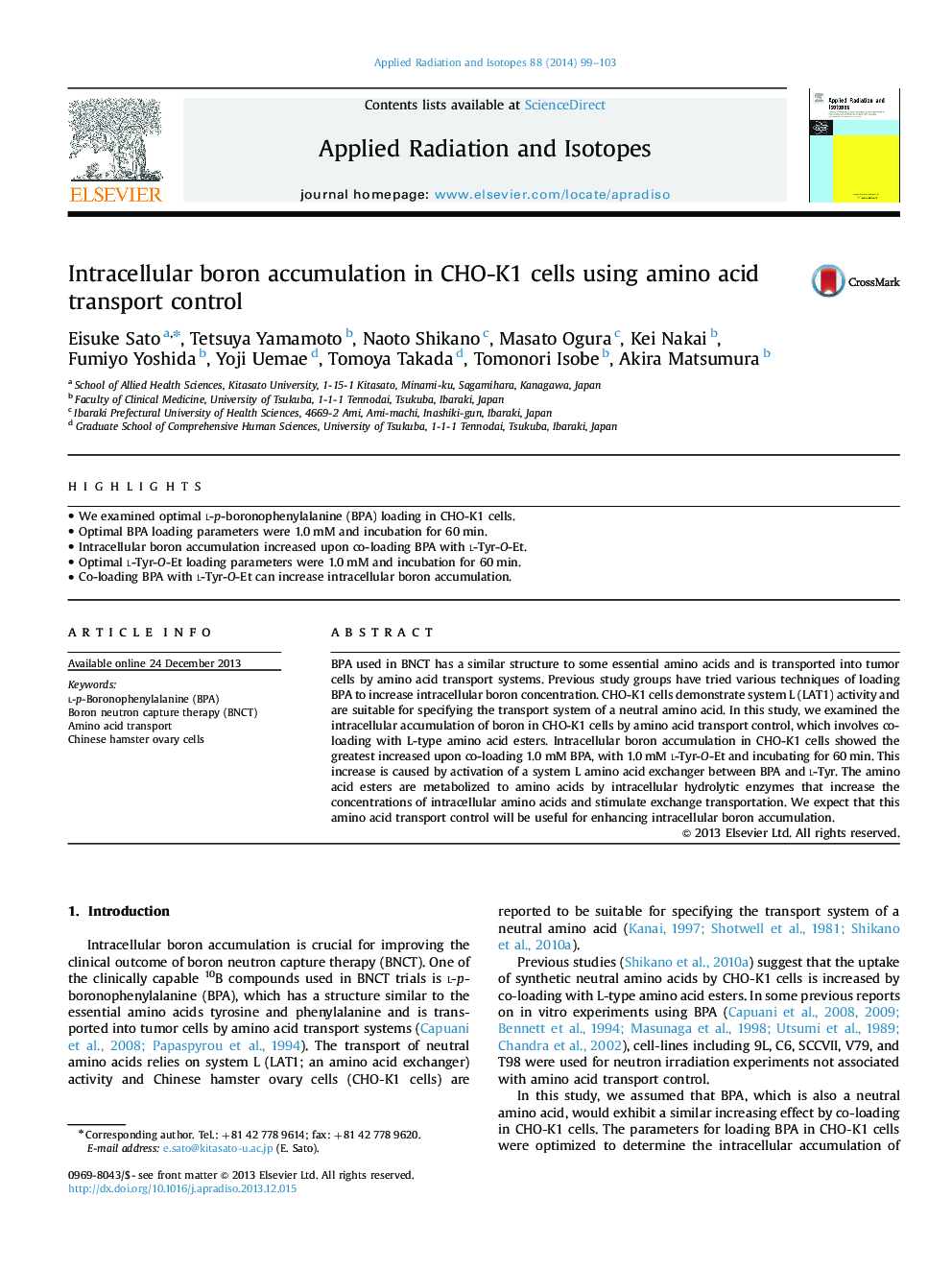| Article ID | Journal | Published Year | Pages | File Type |
|---|---|---|---|---|
| 1875873 | Applied Radiation and Isotopes | 2014 | 5 Pages |
•We examined optimal l-p-boronophenylalanine (BPA) loading in CHO-K1 cells.•Optimal BPA loading parameters were 1.0 mM and incubation for 60 min.•Intracellular boron accumulation increased upon co-loading BPA with l-Tyr-O-Et.•Optimal l-Tyr-O-Et loading parameters were 1.0 mM and incubation for 60 min.•Co-loading BPA with l-Tyr-O-Et can increase intracellular boron accumulation.
BPA used in BNCT has a similar structure to some essential amino acids and is transported into tumor cells by amino acid transport systems. Previous study groups have tried various techniques of loading BPA to increase intracellular boron concentration. CHO-K1 cells demonstrate system L (LAT1) activity and are suitable for specifying the transport system of a neutral amino acid. In this study, we examined the intracellular accumulation of boron in CHO-K1 cells by amino acid transport control, which involves co-loading with L-type amino acid esters. Intracellular boron accumulation in CHO-K1 cells showed the greatest increased upon co-loading 1.0 mM BPA, with 1.0 mM l-Tyr-O-Et and incubating for 60 min. This increase is caused by activation of a system L amino acid exchanger between BPA and l-Tyr. The amino acid esters are metabolized to amino acids by intracellular hydrolytic enzymes that increase the concentrations of intracellular amino acids and stimulate exchange transportation. We expect that this amino acid transport control will be useful for enhancing intracellular boron accumulation.
